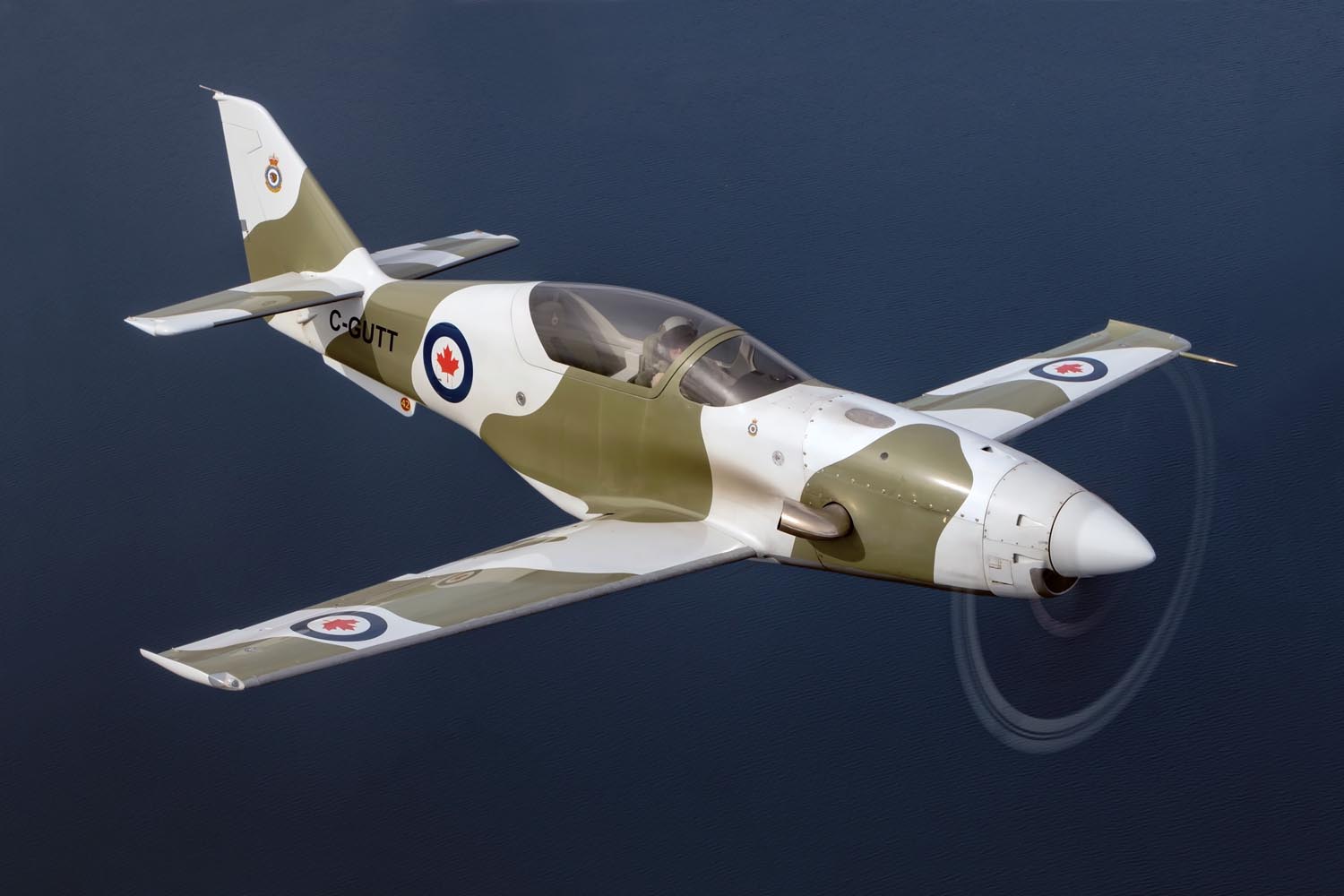 “It ain’t braggin’ if it’s true.” This well-known phrase, attributed to such luminaries as Walt Whitman and Bear Bryant, applies here as well as it does anywhere else you’ve seen it. In the words that follow there may be braggadocious claims you’re sure—absolutely sure— are untrue. Except that they’re for real.
“It ain’t braggin’ if it’s true.” This well-known phrase, attributed to such luminaries as Walt Whitman and Bear Bryant, applies here as well as it does anywhere else you’ve seen it. In the words that follow there may be braggadocious claims you’re sure—absolutely sure— are untrue. Except that they’re for real.
My first sighting of a Legend was in 1998 at Oshkosh and for more than 20 years I have been trying to find a way to scam a ride in one. It finally happened this spring in Tucson, Arizona. And when it did happen, it was not just any Legend, but the granddaddy of them all—Marty Abbott’s turbine-powered, 1000-hp hot rod.
That kind of power should make it fast, and that was the word on the turbine Legend. Most turboprops cruise in the 200-300 knot range. The early King Air 90s and Cheyennes run in the 220 range and the King Air 350 and MU-2 will crack 300 knots, but barely. The exceptions are the Piper 400LS and the Piaggio Avanti. When I heard that there was a homebuilt pressing 400 knots true airspeed in level flight, I was skeptical, to be blunt. But we’ll get to the flying later.
The History
The Legend project was started in Olathe, Kansas, in the early 1990s. The prototype first flew in 1996 and appeared at Oshkosh in 1998. It looked like the love child of a Mustang and a Glasair, (not a bad combo) and was powered by a hopped-up aluminum Chevy V-8. The prototype was converted to a Walter turbine in 1999 and still flies today.
Performance Aircraft ceased operations in the early 2000s and the Legend languished for several years. Ownership passed to another company, but it was re-energized in April 2018 when the project was purchased by Gerry Barton, who started Legend Aircraft and began marketing the kits again last year.
Bill Koleno was working for another kit manufacturer and had a long history with prop-speed reduction units (PSRU) for automotive engine applications. Barton contracted with that manufacturer to develop a V-8 PSRU and in that process Barton and Abbott became a team. When Barton bought the Legend project, he asked Koleno to join him. Crucially, Koleno’s PSRU experience brought a piston option to the project. It’s true that most builders will probably opt for turbine power—except for those wanting to race at Reno, where pistons are a must. But in spite of the lower cost of jet fuel and the turbine reliability, a roaring V-8 sounds and smells a lot better than a turbine.
Moving the Kit Forward
Barton and Koleno haven’t just resumed production of the Legend as it left off. Nearly 20 years on, the design was due for some improvements. It needed more fuel to feed the thirsty turbines. The landing gear needed an upgrade, including better brakes. The turbines were lighter, which resulted in the wing needing to be moved aft. Finally, the higher speed necessitated a change in the horizontal stabilizer incidence. Many of these changes had been explored and developed by Legend builders in the field. But Barton and Koleno adapted them into their new kit.
To accommodate more fuel and to clean up the airframe, an internal roller-bearing flap track system was incorporated, which made room for another 25 gallons in the wing. Moving the oil cooler from the belly scoop to the cowling added 5-10 gallons to the rear tank. This means that a careful builder can have just short of 200 gallons of fuel.
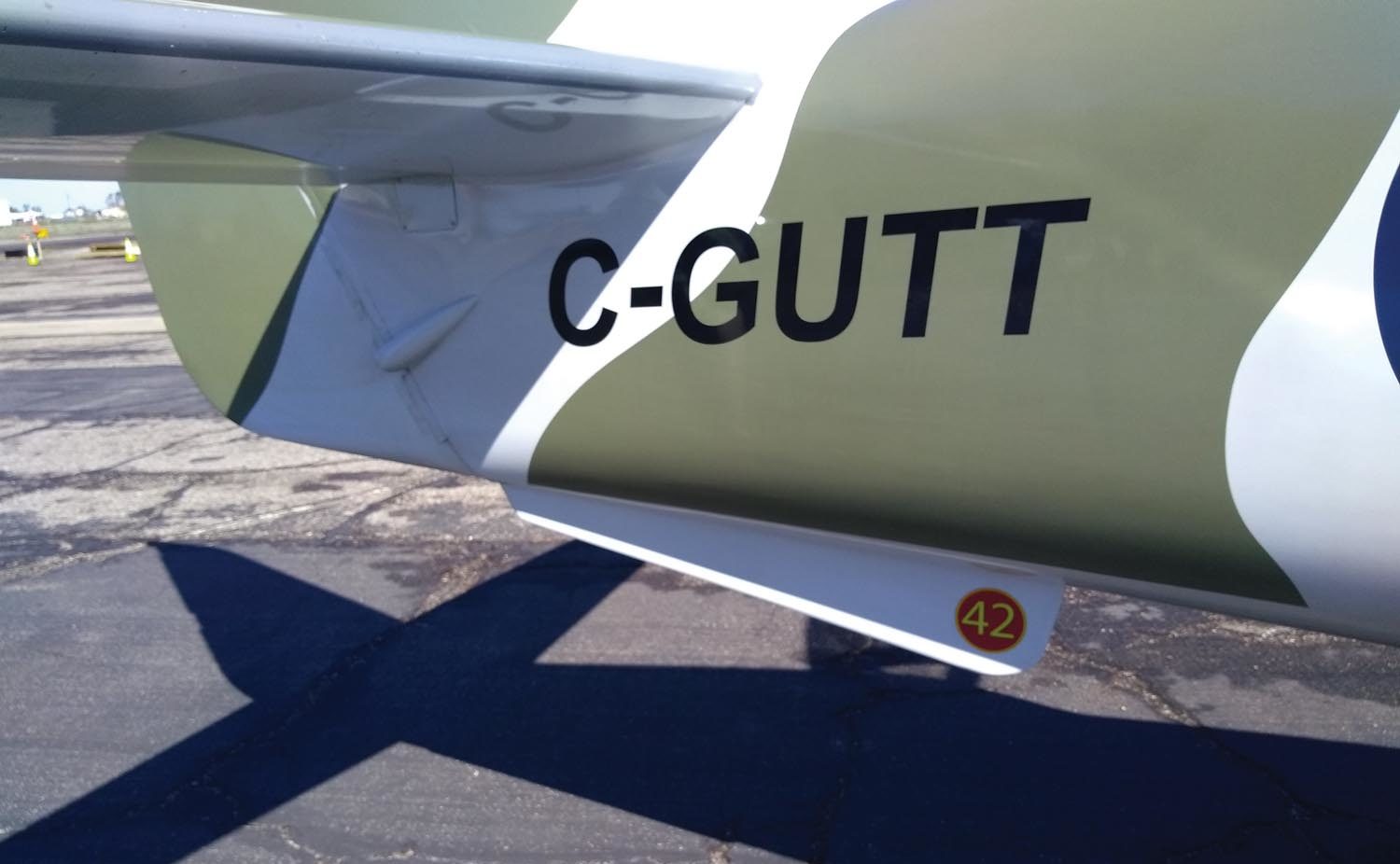
The landing gear was originally powered by electric linear actuators. Most builders in the field were opting for a hydraulic actuator and the new kits include that modification. The original kit has cumbersome brakes that required a bump-out on the wing and precluded fully enclosed gear doors. Matco now has a wheel/brake that can be fully enclosed with good brake performance, which increases reliability and reduces drag.
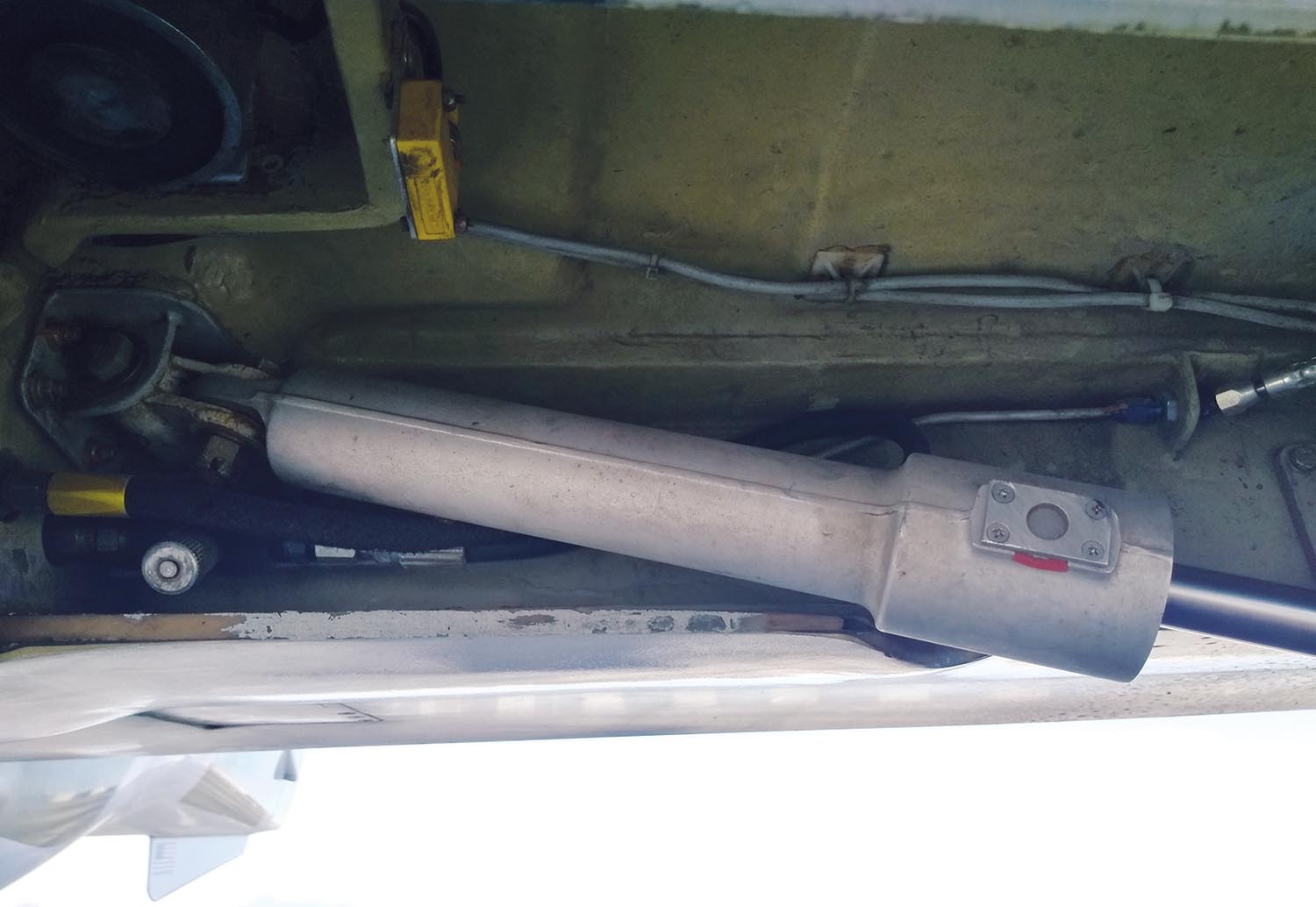
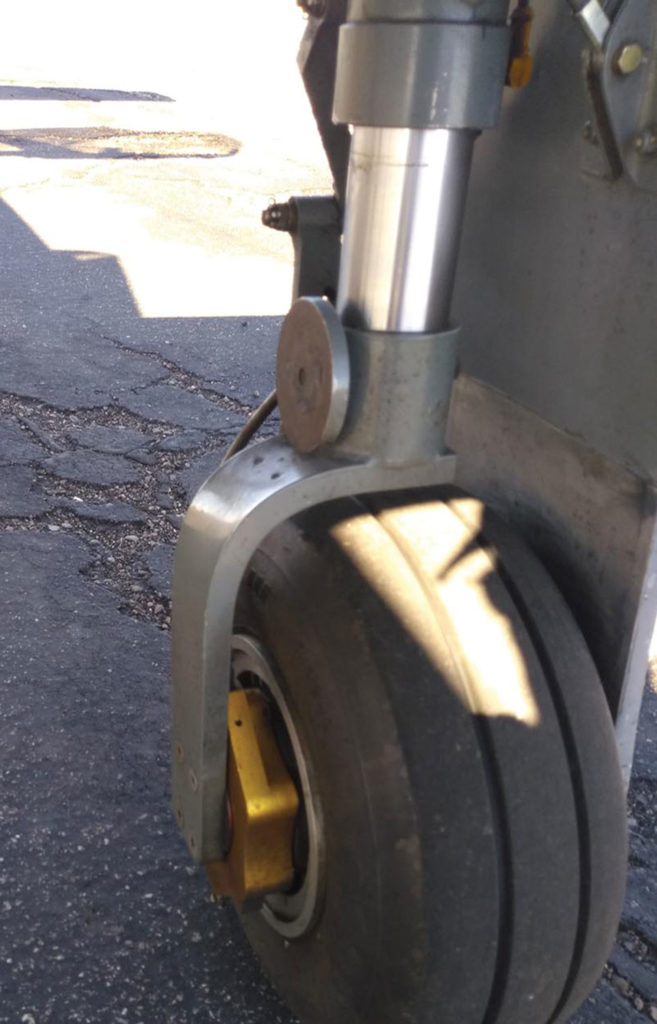
Finally, moving the wing aft and changing the tail incidence had shown great improvement in handling and performance in the field, so those changes were added to the new kit as well.
The fuselage and wings are built from a carbon fiber reinforced polymer by VX Aerospace in Morganton, North Carolina. VX is an AS9100 certified aerospace manufacturer. Quality control and documentation is critical when building composite structures that will be subjected to the loads encountered at the high operating speeds of a Legend. Composite manufacturing has one major advantage when building aircraft—it allows the airplane to be optimized for aerodynamics rather than manufacturing. Building the elegant compound curves that make for fast, slippery airplanes is very difficult when using aluminum, especially in low-volume production.
Quality is not only important in building the kit parts, but also assembling the airplane. An airplane of this performance requires a high level of discipline when mixing adhesive and bonding structures. The kit is available in fast-build form, which means that most of the structural bonding is completed at the factory. Most builders will utilize builder assistance companies that have the climate and quality control needed to ensure that the remaining bonds are strong and the resulting airframe is structurally sound.
While the airplane is very high performance, the systems are relatively simple. Push/pull rods actuate all the control surfaces except the rudder. The gear system is hydraulic with either an engine driven constant pressure pump or an electro-hydraulic power pack, depending on the engine installation. The canopy is hinged at the rear, like an F-16’s, and tips up manually, or there is an electric option. Unlike the F-16, however, there is a fixed windscreen that substantial canopy mates to when closed.
A fixed windscreen is a big plus in an airplane with high speed. It allows the structure to be much more robust and resistant to penetration from bird strikes. Clearly this was considered in the design, because the windscreen is ½ inch thick Lexan, and the supporting structure is massive. Emergency egress is always an issue on canopy airplanes in case of a rollover and this is no exception. The conventional wisdom in these aircraft is gear up for all off airport landings in hopes of keeping the airplane upright. More on that later.
The metal parts which include the engine mount, landing gear, and control systems are built in Koleno’s Austinburg, Ohio facility. The landing gear is simple with internal collar locking actuators. The engine mounts will vary depending on which engine option is selected.
Selecting an engine would be a big step in the decision-making process. While the piston option is mandatory for those wishing to run the pylons at Reno, most builders are going to pick a turbine. But, which one? All of the 28 Legends flying today are turboprops and most are powered by the Walter 601. The 601 is the Eastern Bloc equivalent to a Pratt & Whitney PT-6A with a few notable differences. Two of the 28 have Honeywell/Garrett TPE-331s. Each of these engines carries specific advantages, but that’s beyond the scope of this article. The airplane we flew for this article has the -331.
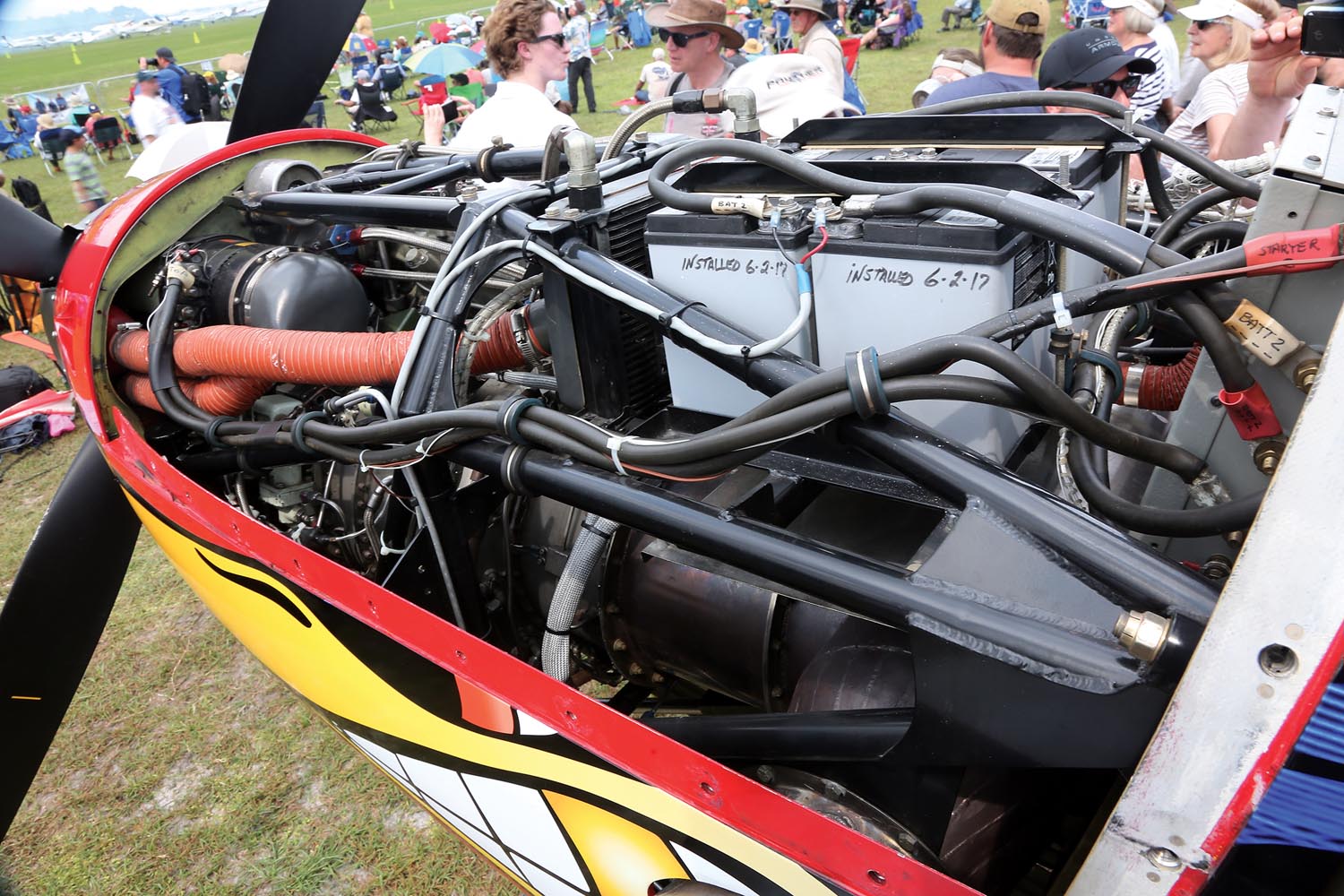
Numbers Game
One of the advantages of building a kit aircraft is that builders have the freedom to determine what numbers they wish to use when certifying the airplane. The kit manufacturer makes recommendations and, while it might be prudent to follow them, they are just that—recommendations.
Legend’s recommended numbers for the airplane are a gross weight of 4000 pounds. The recommended VNE is 435 knots, which just so happens to be a nice, round 500 mph. When I asked at what altitude, the answer was whatever altitude the builder chooses. VNE is typically limited to an altitude in high performance aircraft and as the altitude increases the VNE drops by approximately 2% per 1000 feet. This is because some forms of flutter are a function of true airspeed rather than indicated airspeed. Again, the FAA leaves setting VNE to the discretion of the builder.
To put the Legend’s recommended VNE in perspective, a Lear 45 has a 445 knot VNE. Frankly, 435 knots is an incredibly high speed for a straight-wing airplane. At 400 mph (350 knots) in a P-51 Mustang the air feels as thick as water. Realistically, a 350-knot “true airspeed” VNE would accomplish everything needed to operate the Legend and provide a much higher margin of safety—especially when you consider there’s likely to be airplane-to-airplane variations that could influence the real flutter margins.
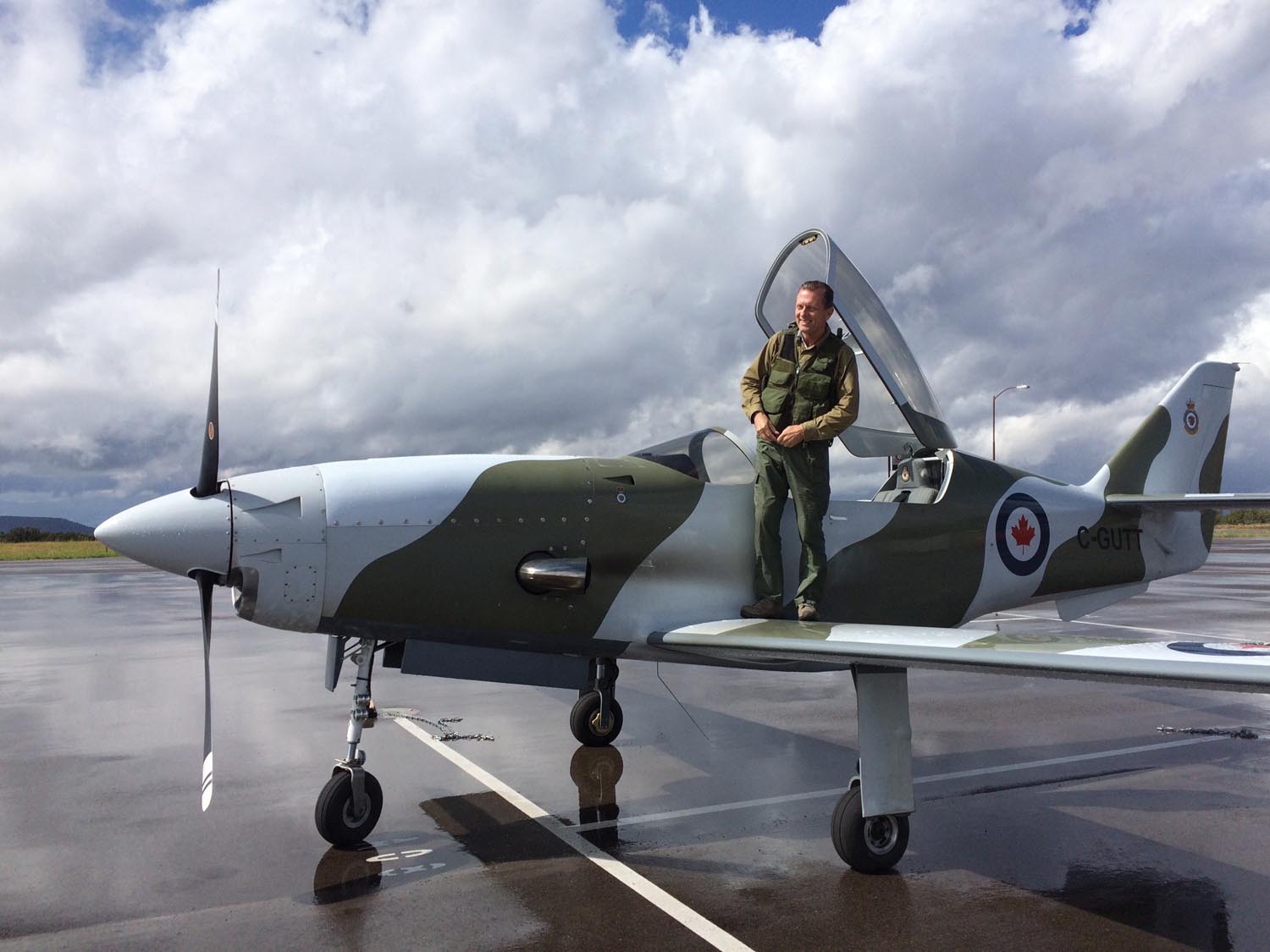
Not a Typical Legend
The airplanes we fly for pilot reports normally are, well, “typical” of the type. For this story we flew Marty Abbott’s TPE-331-10 powered C-GUTT. And not only is his airplane unique, Marty is as well. He started his flying career as a Royal Canadian Air Force pilot. After his initial training, on his first flight in the Lockheed F-104 Starfighter while going across the desolation of Northern Canada at Mach 2.2, the engine exploded. Both pilots ejected and Marty found himself seriously injured in nearly freezing temperatures, waist deep in water. Thankfully, a helicopter on a training mission heard their mayday call and went to investigate. Thanks to a signal mirror, they found and rescued him before he succumbed to hypothermia.
Abbott recovered from his injuries and spent 10 years in the F-104 during the Cold War in Germany, but in Abbott’s words, “the Cold War was frustrating.” He left the RCAF and became a mergers and acquisitions lawyer, and then started an oil exploration and production company.
A guy accustomed to going Mach 2+ in an F-104 is not going to be happy in an RV-8 at 165 knots; so in 2001 he teamed up with Innovative Wings, a builder-assistance company in Calgary, and together they built C-GUTT and fitted it with a Walter 601 engine. It first flew in 2003.
Abbott was not satisfied with the Walter. “It was unreliable, and the altitude performance was poor.” Ultimately it failed, and he landed his Legend gear up in a pasture full of snow in Montana. He wanted a different engine, and in his words, “The PT6 was too expensive.” He found the Honeywell TPE-331 engines were more plentiful and bought a TPE-331-10, which is the 1000-hp variant. As if 1000 horsepower was not enough, he did several modifications to the engine to increase its power even more. As a former F-104 pilot would do.
Innovative Wings designed and completed the engine installation. They also modified the Legend by moving the wing aft to adjust the center of gravity, and also changed the incidence of the horizontal stabilizer. The results were profound. Abbott says, “The Walter was 270 KTAS, and the Garrett is 370 plus on essentially the same fuel flow.” To be blunt, I was skeptical.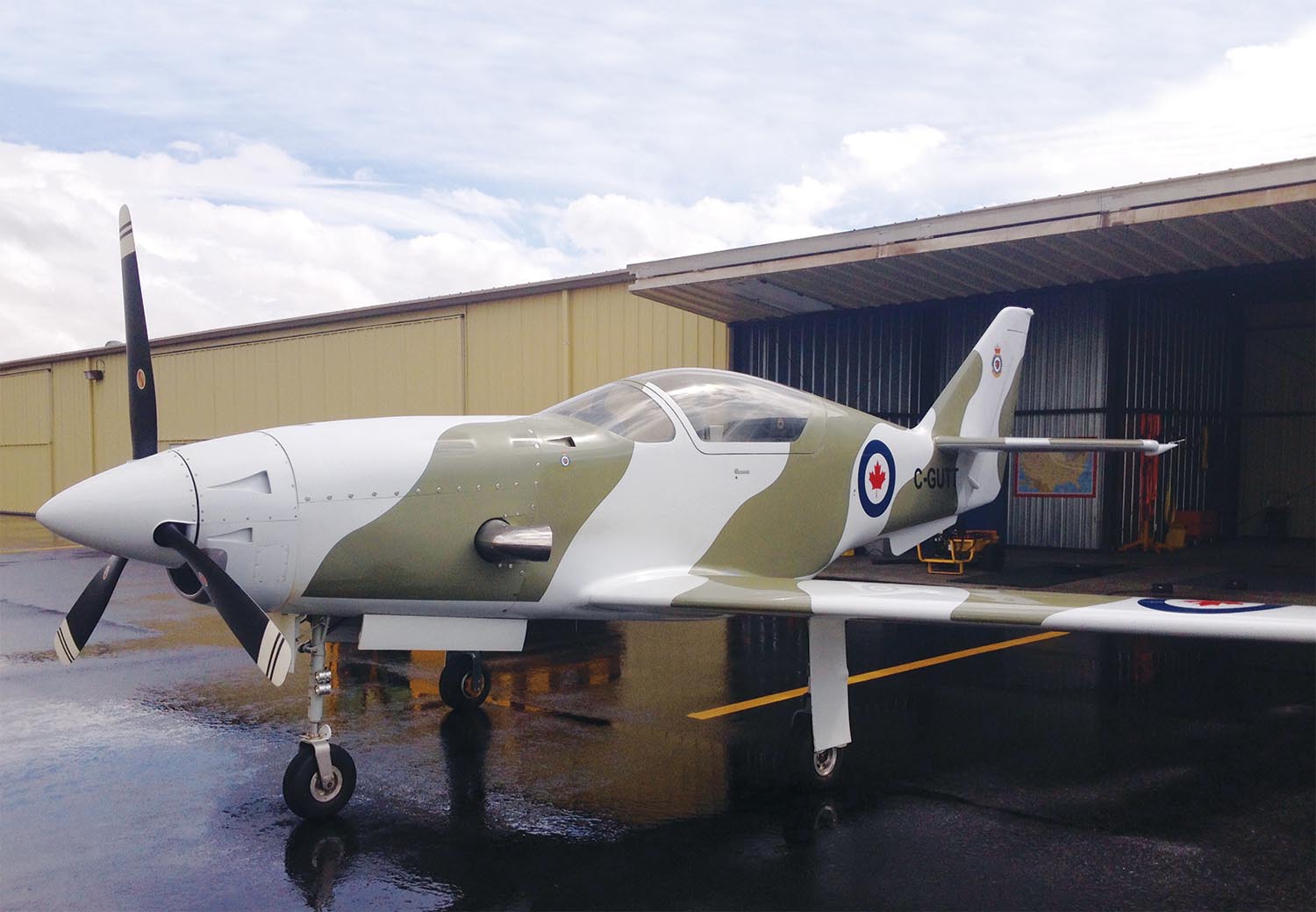
C-GUTT, the Airplane.
We met in Marana, Arizona, for a flight in the Legend. Abbott taxied in with the unmistakable scream of the TPE-331 drowning out all other noise on the ramp. The -331 is a single shaft engine which means the compressor and power sections turn on one shaft and the engine idles in the high 90% range of full rpm. The propeller is at a very flat pitch to keep the thrust down. It is a deafening roar and, frankly, one of the few drawbacks of the -331 engine.
Abbott shut down the airplane, opened the canopy, took off his helmet and O2 mask, and climbed out wearing a G.I. surplus survival vest, just like he would have worn flying the F-104. The only thing missing was a G-suit.
C-GUTT is a working airplane. It has a flat gray camo scheme and the paint shows the effects of flying in the rain at high indicated airspeeds. Not only are the indicated airspeeds high, but raindrops impact an airframe at true airspeed, not indicated airspeed. So, for a given indicated airspeed, every 1000 feet of altitude increases the raindrop impact speed, aka True Airspeed, by 2%. (One of the great mysteries of aviation is how raindrops can remove paint and not the bugs on the leading edges…)
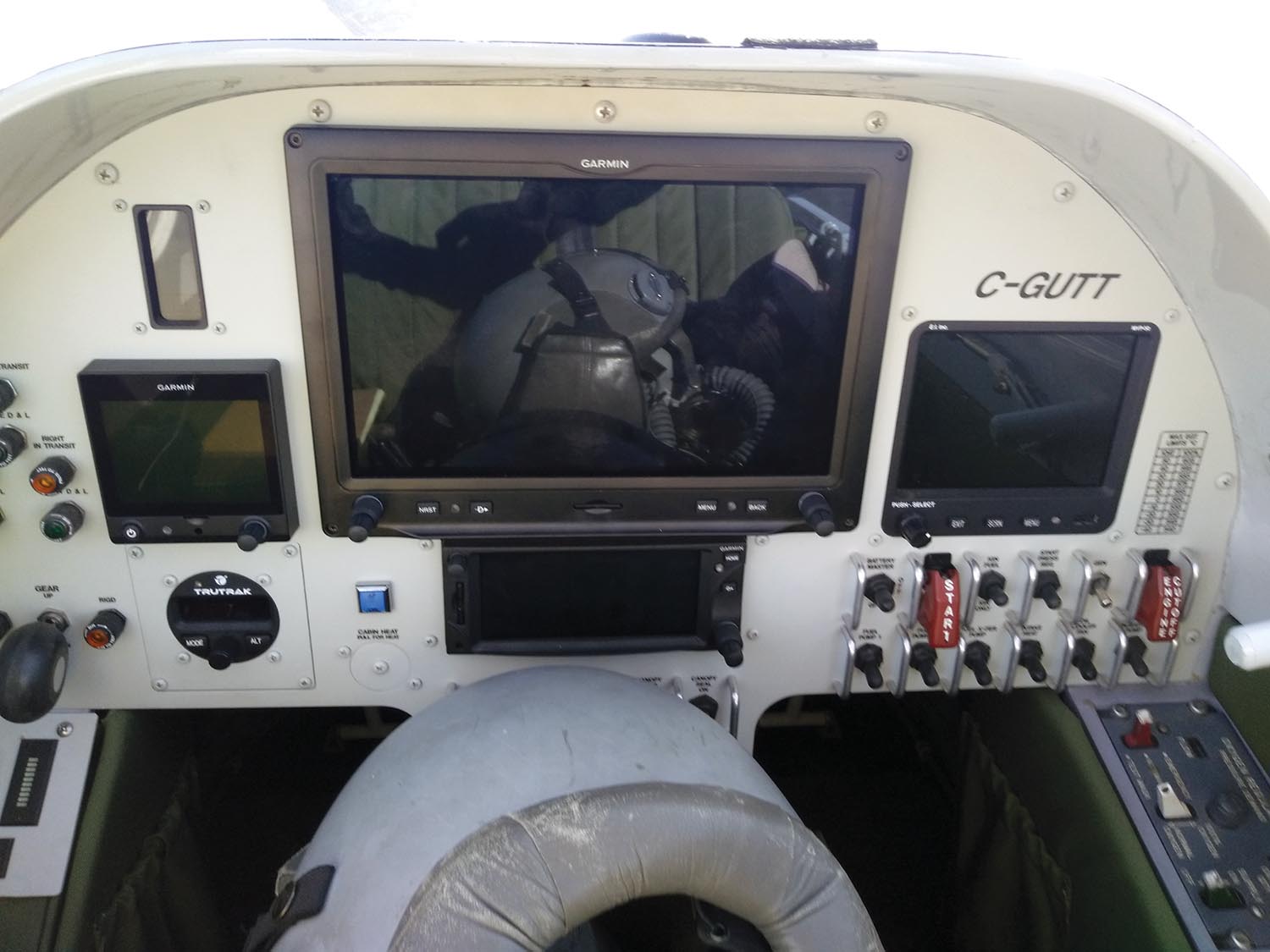
The front cockpit was recently equipped with a Garmin G3X Touch system with a G5 as a backup. That is coupled to a Garmin 650 and a TruTrak Digiflight II autopilot. An Electronics International MVP-50 engine monitor helps keep the instrument panel uncluttered. The rear cockpit has a smaller G3X Touch and a stick. No engine controls or rudder pedals in the back. Diluter demand O2 regulators in both cockpits supply oxygen to modern military-style pressure masks. Other than the white paint on the instrument panel, the airplane has exactly the same look and feel as a modern military fighter jet.
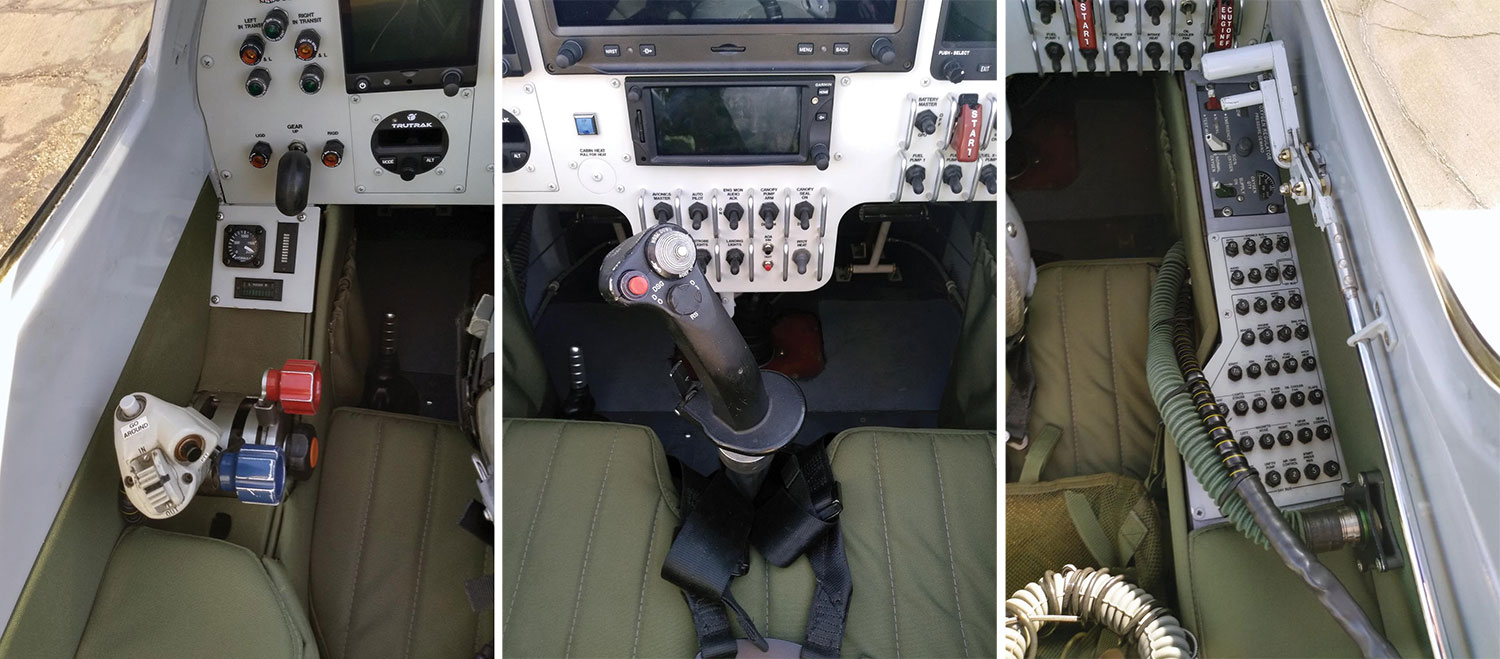
Baggage in C-GUTT is behind and below the rear seat and somewhat limited. There are provisions to install a baggage area behind the rear cockpit bulkhead, but it was not installed. The walk around is very straightforward. Fuel is carried in the wings (98 gallons), in an aft fuselage belly tank (48 gallons) and in a header tank (15 gallons). The airplane weighs 2600 pounds empty, and Abbott chose to use 4100 pounds as the maximum gross weight, so with full tanks that would leave 405 pounds for the crew and bags.
Everything about the airplane looks robust. The control surfaces are tightly fitted. The composite wings are perfectly smooth, with no rivets or seams to disrupt the laminar airflow on the wing. The airfoil is unique to the Legend and was designed by NASA engineer, Jeff Viken. Barton says the wing has a sweet spot that is at a higher speed than the Walter-powered airplanes could achieve. What this means is that as the airplane goes faster the drag does not increase as expected, and this is what allows the dramatic increase in speed when the airplane is equipped with more power.
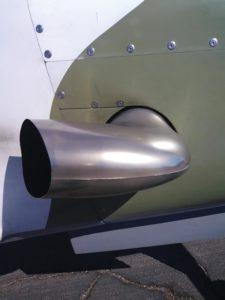
The exhaust pipes look familiar as they are King Air stacks, but they are fitted to a funnel in the aft section of the cowling that acts as a venturi to pull out the engine heat like the augmenter tubes on early Cessna 310s. There is a very large battery mounted on top of the engine to move the CG forward and start the big turbine. The propeller, like the engine, came from a Swearingen Merlin with the diameter cut down to 96 inches.
The landing gear on C-GUTT is actuated hydraulically by an engine-driven pump and the uplocks are electromagnets. The tires look small, and must be very high pressure to accommodate the gross weight Abbott selected for the airplane. The walkaround goes quickly because there really isn’t much to see. It bears repeating that it is a pretty simple airplane.
Let’s Fly!
The OD green upholstery, five-point harness, HGU-55 Helmet and MBU-20 O2 mask make getting in the airplane feel like entering the jet fighter Abbott was flying over Germany. The canopy is closed manually and substantial locking pins holds it closed.
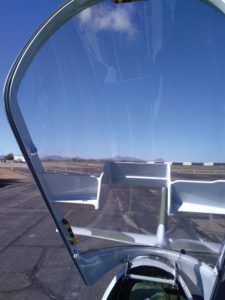
Starting a single-shaft engine means that the starter has to turn the entire engine and propeller. It takes a massive amount of electrical power and quite a bit of time as the fuel ignites and begins to help the starter accelerate the engine to idle speed.
The nosewheel is castering with no direct steering, but the Matco brakes appeared to guide the airplane easily, and the beta position on the propeller killed any thrust to control taxi speed to the runway. The cockpit ventilation is good, with no hint of kerosene inside.
Taking the runway the plan was a max performance climb to 17,500 feet. Abbott brings up the power and releases the brakes and we were off. Trying to describe the next 30 minutes without an endless string of superlatives is beyond the skill of this scribe. The only flight I have experienced that is in the same realm was in the F-16.
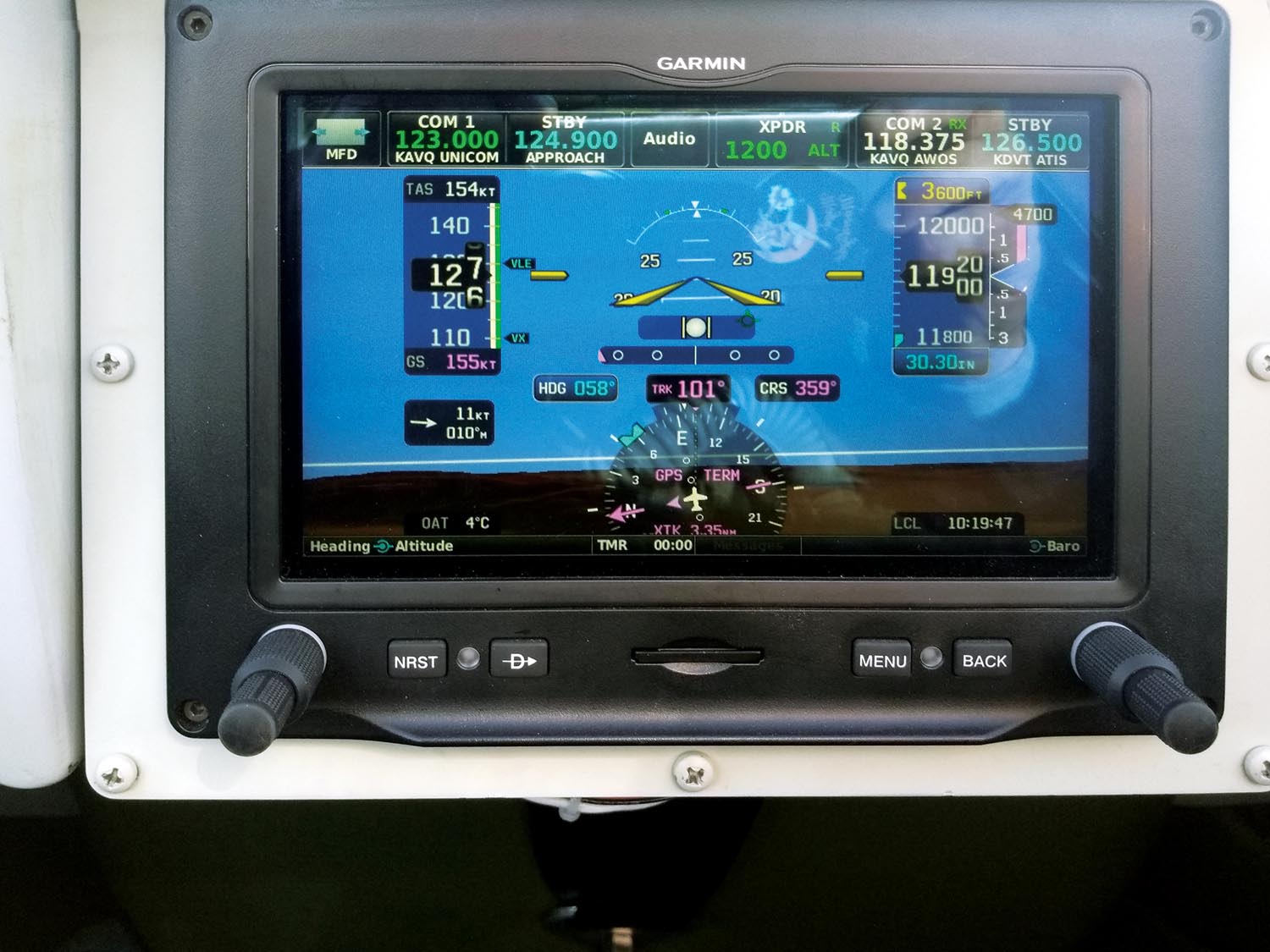
The acceleration is like a jet fighter. Abbott appears to have plenty of rudder authority to handle the torque, but like many high powered light airplanes, I would wager that the tires on the left hand side of the airplane get changed twice as often as the right because of the scrubbing of the tire trying to hold the incredible torque.
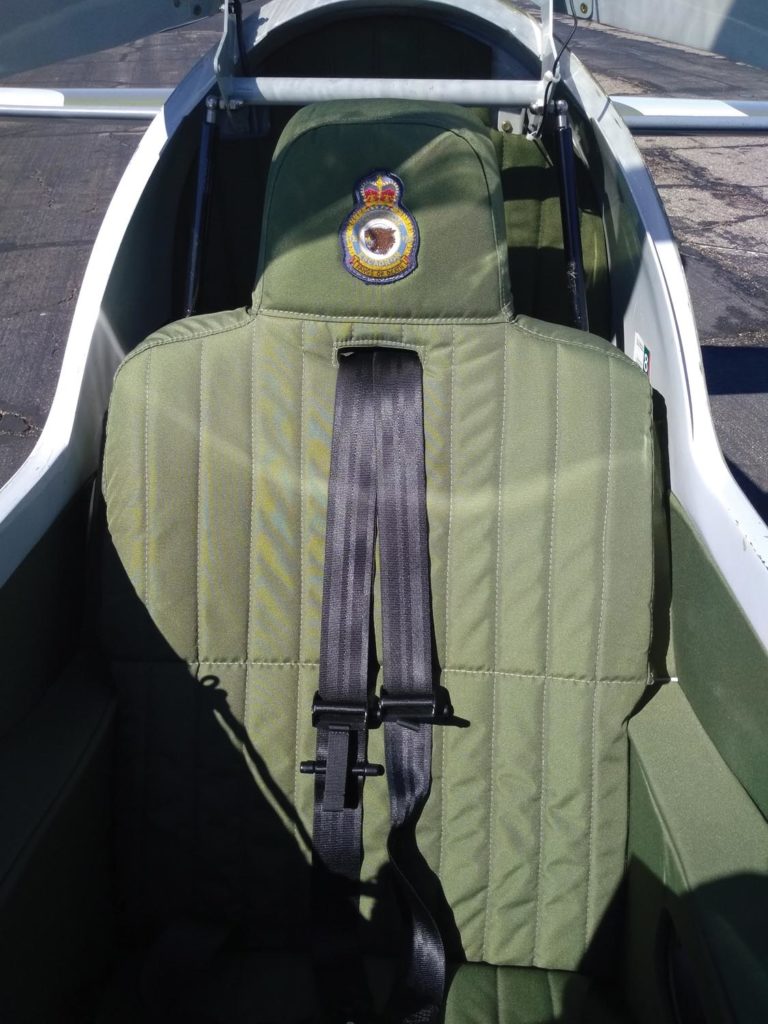
We are quickly airborne, and at around 150 knots, Abbott pulls the nose up in excess of 45 degrees, causing the Garmin G3X to indicate a climb of 7-8000 fpm. By 11,000 feet, climb rate settles back to 5000 fpm. One could say the Lear 45 climbs easily at 4000 fpm, but that is at 250 knots. We are indicating 130 knots so the deck angle was twice that found in even the highest performing lightweight bizjet. We level at 17,500 feet after just three and a half minutes. Think about that.
Leveling off the horizontal acceleration was noticeable, and in what seems like a few moments, we are in level flight at 17,500 feet indicating 273 knots with a true airspeed of 360. Bearing in mind that as long as power is available, indicated airspeed will remain nearly constant and true airspeed will increase by 2% of indicated per 1000 feet. So, 2% of 273 is 5.5 knots per 1000 feet. Abbott says his Legend will do 275-285 knots on a 40-gph fuel flow in the mid-20s and, based on the performance at 17,500, those numbers are credible.
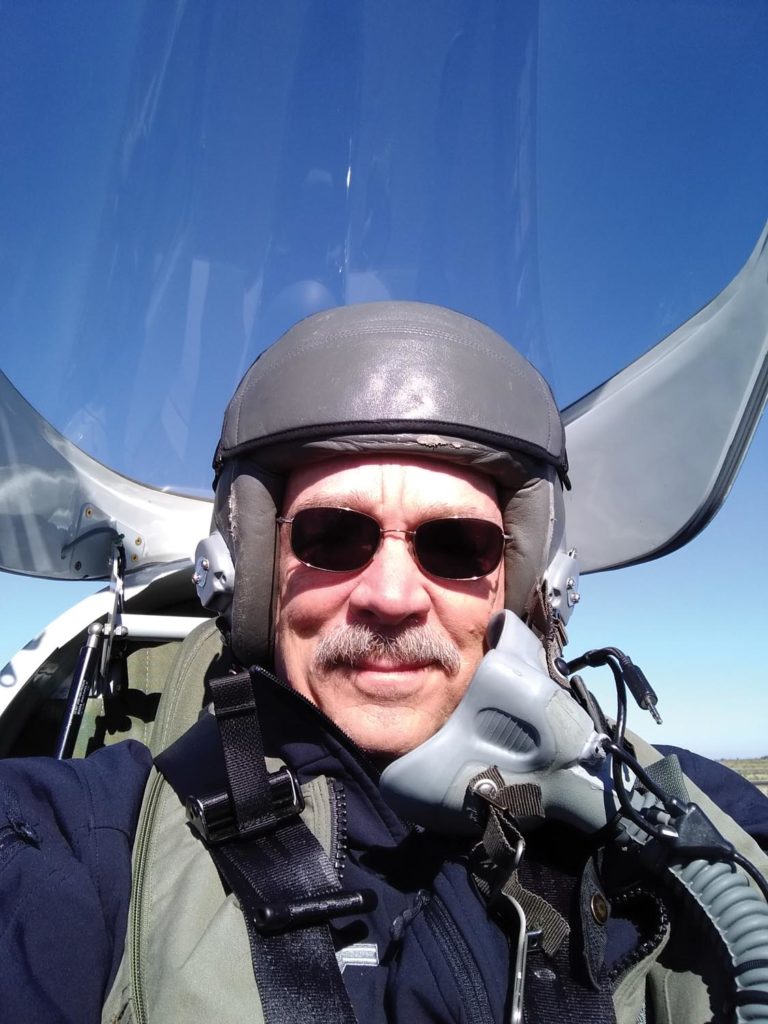
I take the stick for a while at altitude and the handling proves very acceptable. Often highly wing loaded airplanes at higher altitudes can become a little sporty to fly, but at 17,500 the Legend is very honest. With 101 square-feet of wing area on a 4000-pound airplane, wing loading is just under 40 pounds per square foot. To put that in perspective, a P-51 Mustang is the same, but that is based on the Mustang at a gross weight of 12,000 pounds, and nobody has flown a Mustang at that weight since the war ended. At normal Mustang weights flown today, wing loading is in the mid 30s.
We descend to the low teens to do some air work. Again, I take the stick for both clean and dirty stalls. There is adequate pre-stall buffet followed by a clean break in both configurations. Abbott loops and rolls the Legend, and both seem effortless. The airframe appears to be rock solid, with no engine or aerodynamic vibration at any speed. At the risk of working the superlatives too hard, it’s all incredibly effortless.
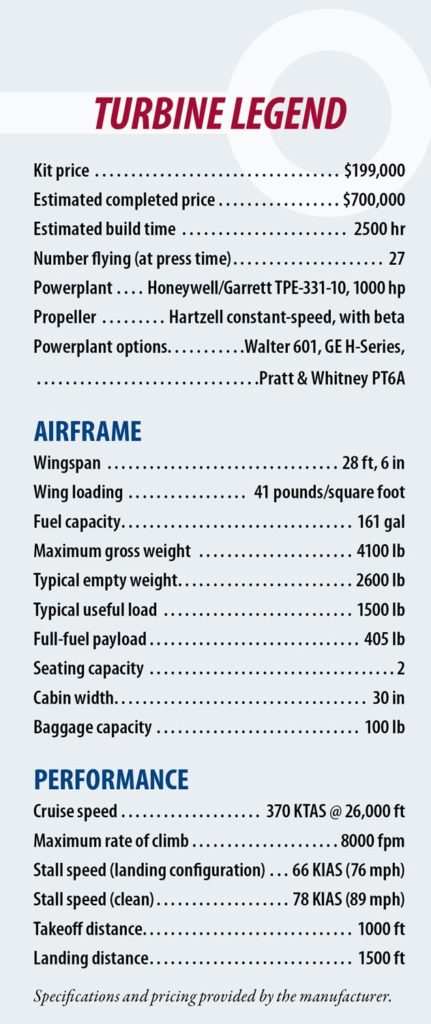 Too soon it’s time to land. Just like any good fighter, we come screaming up the initial for the overhead approach at 250 knots. Power comes back in a crisp break to get the airplane slowed to 150 KIAS for gear extension and half the flaps. Banking on the base turn the airplane continues to decelerate to 120 and the rest of the flaps come down. Abbott rolls wings level on a short final, slowing to 85 KIAS, for a firm arrival on the high pressure tires in what appears to be an effortless landing. When the power comes back, the big propeller goes to flat pitch and the airplane slows quickly. It was over.
Too soon it’s time to land. Just like any good fighter, we come screaming up the initial for the overhead approach at 250 knots. Power comes back in a crisp break to get the airplane slowed to 150 KIAS for gear extension and half the flaps. Banking on the base turn the airplane continues to decelerate to 120 and the rest of the flaps come down. Abbott rolls wings level on a short final, slowing to 85 KIAS, for a firm arrival on the high pressure tires in what appears to be an effortless landing. When the power comes back, the big propeller goes to flat pitch and the airplane slows quickly. It was over.
Thirty minutes of intense exhilaration! Incredible! And I see first-hand a turboprop that is nearly a 400-knot airplane.
With 28 airplanes flying and a new company supporting and selling kits again, it is pretty easy to see that there will be more Legends flying soon. Barton reports that he has sold two kits in the last year and there are a total of five aircraft being assembled currently. The new modifications make a basically good design even better, and having a company supporting the model will be a boost as well.
But Barton and Koleno are not done. The plan is to have his Piston Legend racing at Reno this September. And they have designed and have a prototype in assembly for a pressurized version which will have an 8,500 foot cabin at FL280. That will be a traveling machine.
Photos: Joe Copalman, Mariano Rosales, Courtesy Legend Aircraft


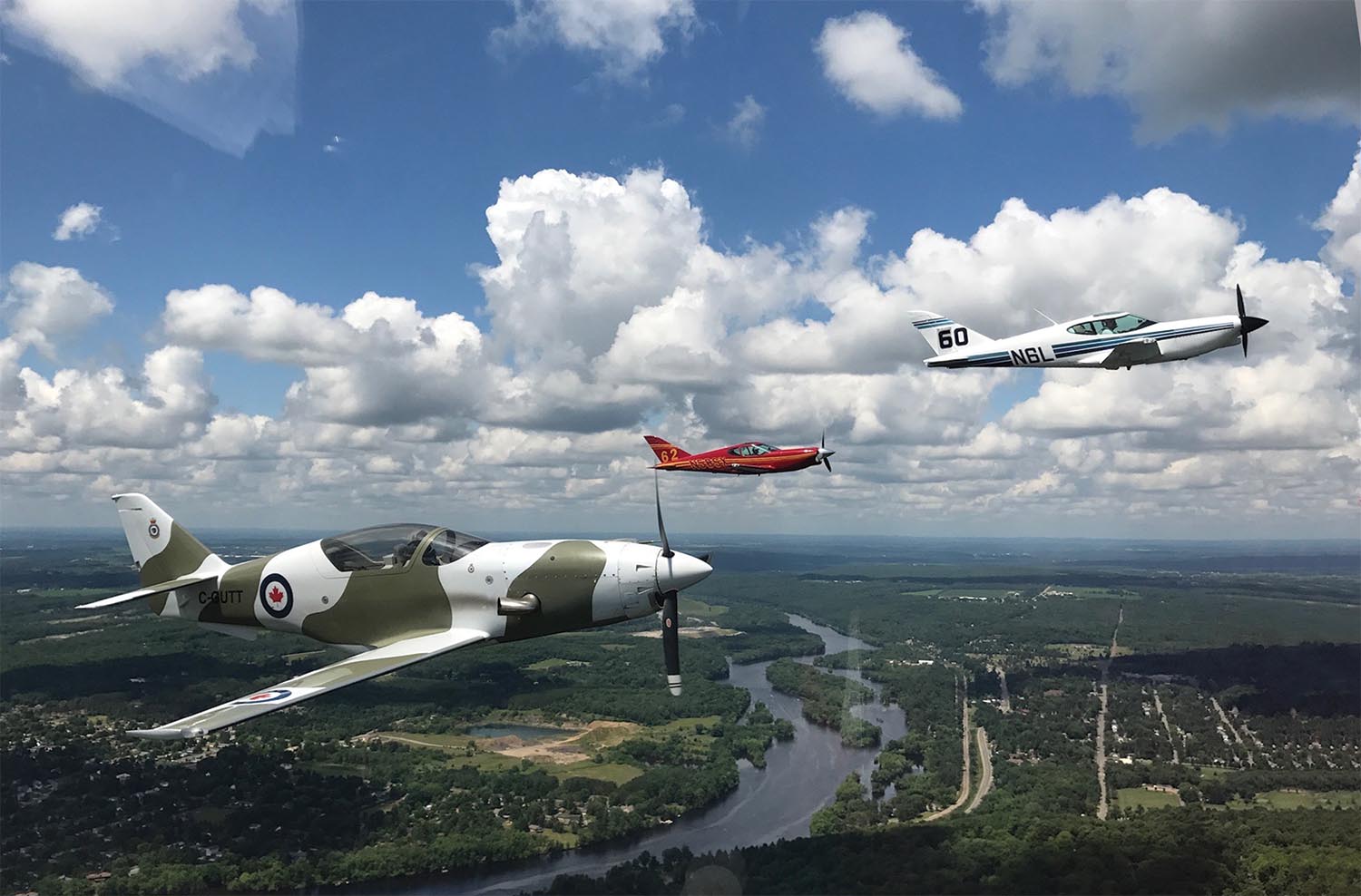
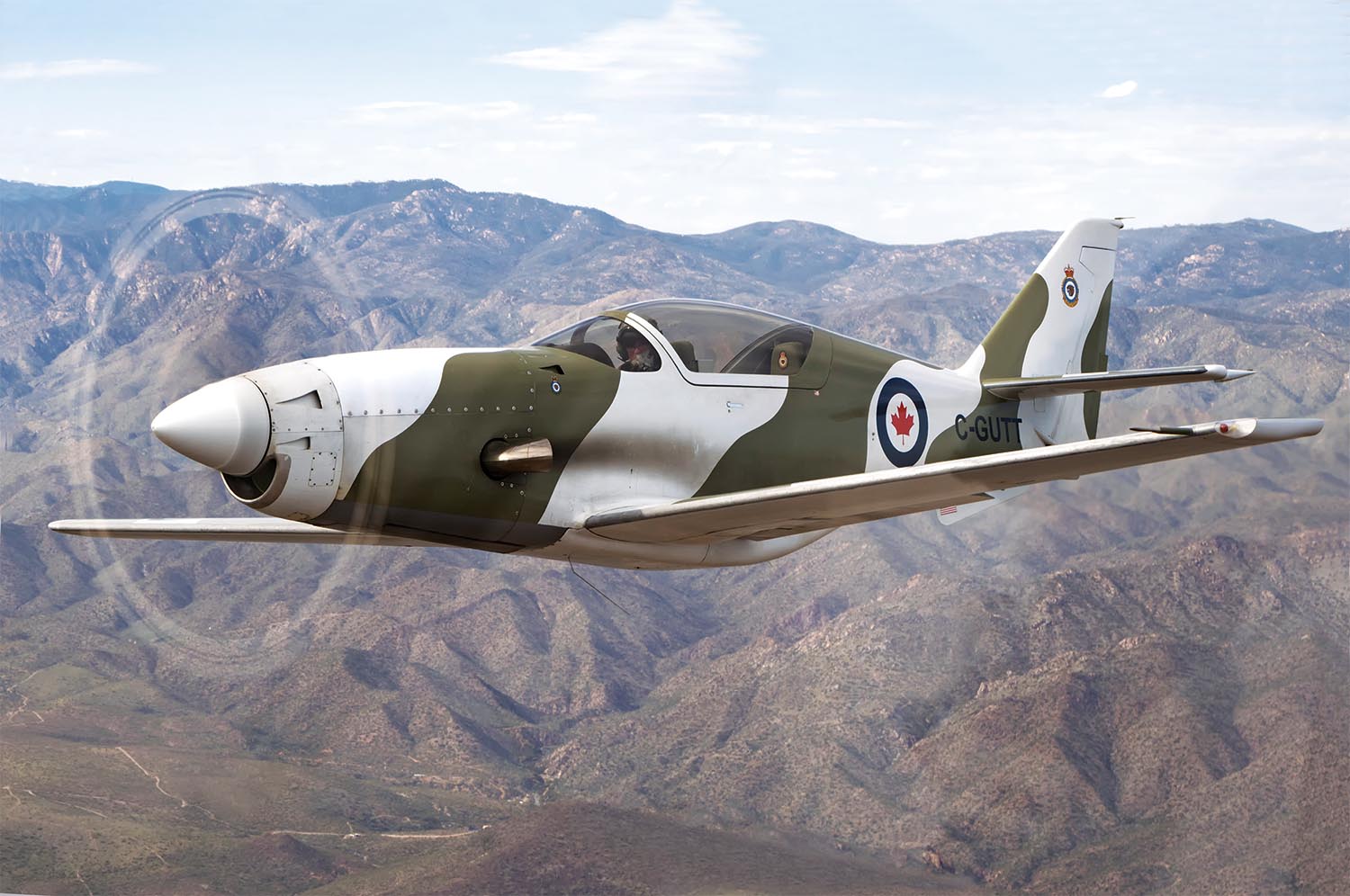
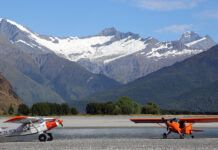

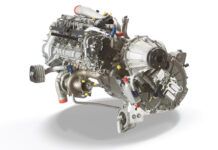
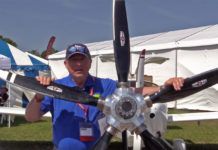
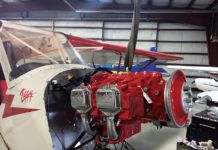
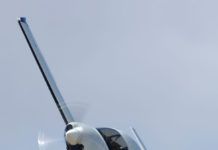
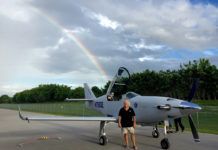
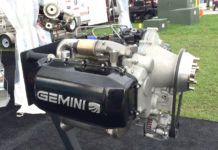

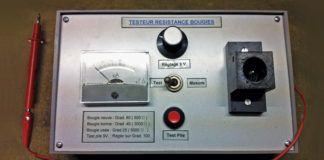
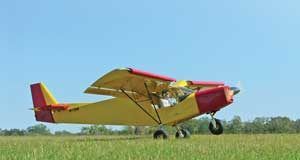
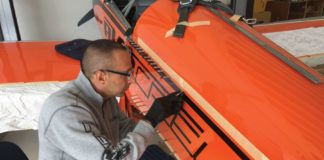
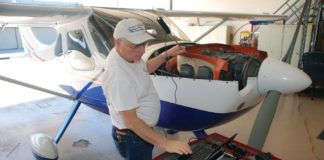
https://www.geaviation.com/sites/default/files/thumb-aerobatic.jpg
Aerobatic engine
When the aerobatic H-Series engine is certified, it will be the first electronic and engine propeller controlled (EEPC) aerobatic engine in its class.
Missed this article when it first came out – great to read some of Doug’s great writing again!
You could have simply stated that the Garret turbine is a single shaft and has specific advantages over the 2-shaft pt 6 turbine. First, is greater power with the same fuel burn. Second, is immediate power. Since the PT-6 engine uses compressor air from the main compressor to feed the prop compressor, there is a lag between throttle up and power. So, for racing, this is obviously important. Also, though, for aborted landing and go arounds in other situations, immediate power can save your life. In addition, Garretts have a TBO of about 7000 hours and PT-6s about 4000 hours. There is one hot section inspection for the Garretts that has to happen earlier, but overall the TPE 331 variants have lower operating costs than the PT-6, provide more power, and the power is instant. Garrets, though, need strong batteries for startup, because weak batteries can spool the turbines more slowly on startup, increasing the risk for hot start damage. In addition, Garrett turbines have to be cooled manually by hand turning the props after some shutdowns. Garretts are also louder on startup, although certain configurations of the pt6 – namely the push configuration on the Piaggio Avanti – are so loud that certain airports(Santa Monica, for example) have banned that aircraft due to noise. Yes, obviously I am a TPE-331 fan and find it curious that the PT-6 is in so many aircraft.
Someone once told me the PT6 engine is like a model A many were made and so parts for them are everywhere. Even though the Garrett is better turbine parts are not a plentiful and are more expensive is what I’m speculating..
Someday, somebody is going to stuff a 1600 hp GE Catalyst engine with a 5-bladed McCauley prop in the Legend. But, honestly, to go really fast it needs to go really high. It it wants to be at ~40,000 feet it’ll probably need more wing. That’s not a bad thing either… longer wings can mean more fuel. Maybe it’ll see 430 knots in level flight!.
Hi my name is Luke,
My dad was a former navy pilot who had a tour with the RCAF and is interested in possibly building a lot plane.
After reading you awesome article I am wondering if you have any contact information for Mr. Abbott.
Thanks,
Luke.
If you’re in the planning stage for a legend jet let me know. I have the tail section of parts, if interested email me [email protected] or 682 298 5014 and I’ll email you the parts list with pictures.
Thanks, Lanny Benson